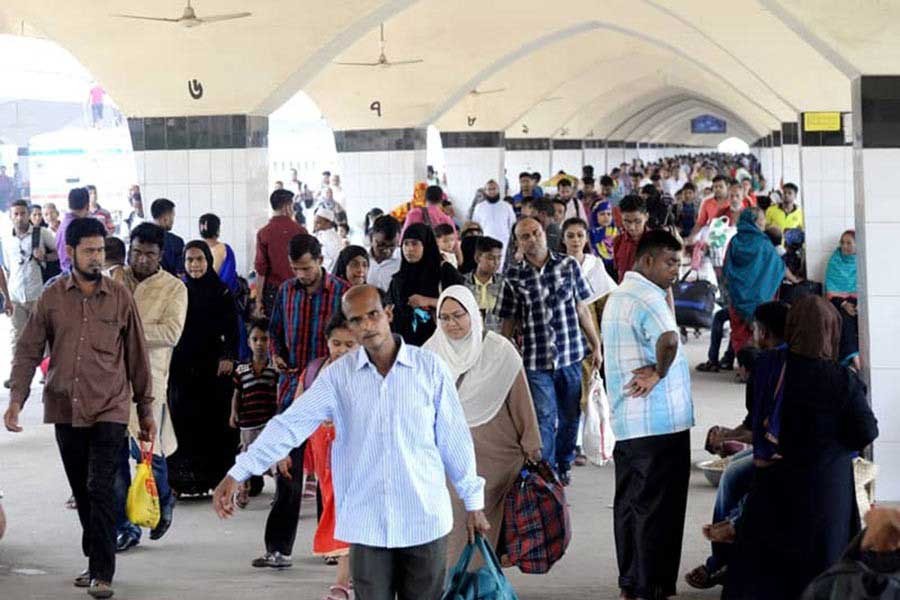The prediction about the country's urban population is grim. Currently, 35.70 per cent (about 45 million) of Bangladesh population lives in cities and towns and this population size is likely to double in 2050 and triple by this century at 100 million. The rural population is likely to stabilise at about 140 million within the next five years, according to the internationally renowned Journal of Health Population and Nutrition. The Bangladesh Bureau of Statistics (BBS) gives a natural growth of 1.5 per cent in urban population but the Population Reference Bureau's 1.9 per cent increase looks more likely. This means the rural to urban migration will happen at an exponential rate. So, all urban centres will have to absorb the additional rural migrants, although the choicest destination obviously will be the six divisional cities and a few industrial belts around them or beyond. Already in a mess, all the cities fail to meet the challenges of providing the required public facilities and community services. Cities like Dhaka and Chattogram are gasping for breath and unless some extraordinary measures are taken to solve their problems, any further demographic pressure on them will be the proverbial last straw on the camel's back.
In that case, it is the other large cities or towns that will have to host the new entrants to the urban life. However, if the current trend continues, one-third of these new urban people will find themselves landing in slums. Reports from cities like Barishal and Sylhet, district towns like Rangpur and smaller towns are distressing. Over the years, encroachment of rivers, canals and other water bodies have been so rampant that there is hardly any urban centre free from water-logging, road congestion, hygienic and sanitary nightmares. Suffice it to cite the examples of Barishal where years of illegal occupation of canals combined with utter inconsideration of the public has exposed their vulnerability to rains. The Barishal City Corporations (BCC) has undertaken on its own the task of recovering the 43 canals, many of which have been reduced to the sizes of drains, and removing accumulated garbage. But the task now proves mountainous as15 tonnes of polythene and plastic are coming out every day from one canal.
Clearly, without a paradigm shift in development, the future demographic relocation ---particularly in the context of climate change and its impact on this small geographic delta ---will invite troubles of unprecedented order. The cities, let alone towns, are ill prepared for the probable exodus of a huge army of rural migrants. The only silver lining is that mostly the young generation is expected to migrate to cities and towns. If planned well in advance, a nightmare of urban conundrum can perhaps be averted.
How? The policymakers must concentrate on creating smart cities. Japan has already made an elaborate plan to develop 10 such cities. But Japan is a highly advanced country in terms of technology. Bangladesh is not. But an overwhelming majority of young population here is to its advantage. If education and training can be tuned to meet the challenge, things can be managed without disrupting the national stability. The outlying cities and towns with no major mega infrastructure can be developed into smart cities with the introduction of the latest knowledge and technologies under the programme of transfer of technology from the developed to the developing world. As a late entrant with weak technological base, this country must make good use of this advantage.


